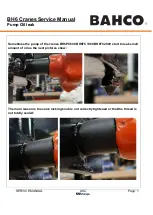
- 19 -
Note (
2
)
For information on setting mode parameters, refer to "9.2 Setting Test Parameters"
on Page 29.
(2) Wait until the condenser bath and receiver compartment reach the specified temperatures.
Note: Bath temperature is maintaind at 4
o
C when STANDBY even if set bath temperature is 0
o
C to avoid icing. Once start a test, bath temperature will be mainatned at set
temperature.
4.2
Drying the Condenser Tube
Attach a piece of cloth, such as dry gauze, to one end of a steel wire of length 70 cm and insert it
into the condenser tube from the bottom, wiping moisture and dirt off the inside wall of the tube.
If the tester is used in a very humid environment, condensation may occur near the bottom of the
exposed section of the condenser tube in the receiver compartment, and accumlate in the
receiver cover. Be sure to wipe moisture from this section. If condensation drips into the
graduated cylinder, test results may be incorrect.
4.3
Setting a Sample
(1) Prepare cooled test samples, flask and guraduated cylinder according to ASTM
D86/D850/D1078. Do not use flasks having a deformed bottom, fine scratches or cracks, as
these may break and cause a fire during testing.
(2) Measure the sample precisely up to the 100% graduation (top mark) of the graduated
cylinder, then immediately transfer the entire sample to the distillation flask.
(3) Add few boiling chips (small stones or small grass beads) to the sample to avoid an
irregular boiling (bumping).
(4) Attach the temperature sensor with centering device directly to the distllation flask to
prevent vapor from escaping, then clamp the sensor into place so that it will not come off
during testing.
(
3
)
Note (
3
)
For details on attaching the temperature sensor, refer to "8.1 Attaching the
Temperature Sensor" on Page 26, and for attaching the dry point sensor, refer to "8.2
Attaching the Dry Point Sensor" on Page 27.
(5) Place the assembled flask in the heater unit.
Attach silicon-rubber stopper No.0 to the vapor tube of the flask to secure the connection
to the condenser tube. Turn the knob on the front of the heater until the flask support
board comes into firm contact with the bottom of the flask and makes the flask straight.
The diameter of the hole in the flask support board should be chosen by following the
testing method of section 4.3 (1).
Do not close the Fire Containment Shutter after setting the flask.
(6) Place the graduated cylinder used in 4.3 (1) into the receiver compartment.
To do this, lift the receiver cover along the condenser tube. With the cut-out on the bottom
plate of the graduated cylinder facing the tester, tilt the cylinder and put the top inside the
compartment. Push the cylinder up and swing the base across into the receptacle of the
monitor assembly. After checking that the graduated cylinder is seated straight, lower the
receiver cover until it comes into firm contact with the top of the graduated cylinder.
<<This completes the test preparations>>
Summary of Contents for AD-6
Page 2: ...1 Blank Page...
Page 9: ...8 Blank Page...
















































